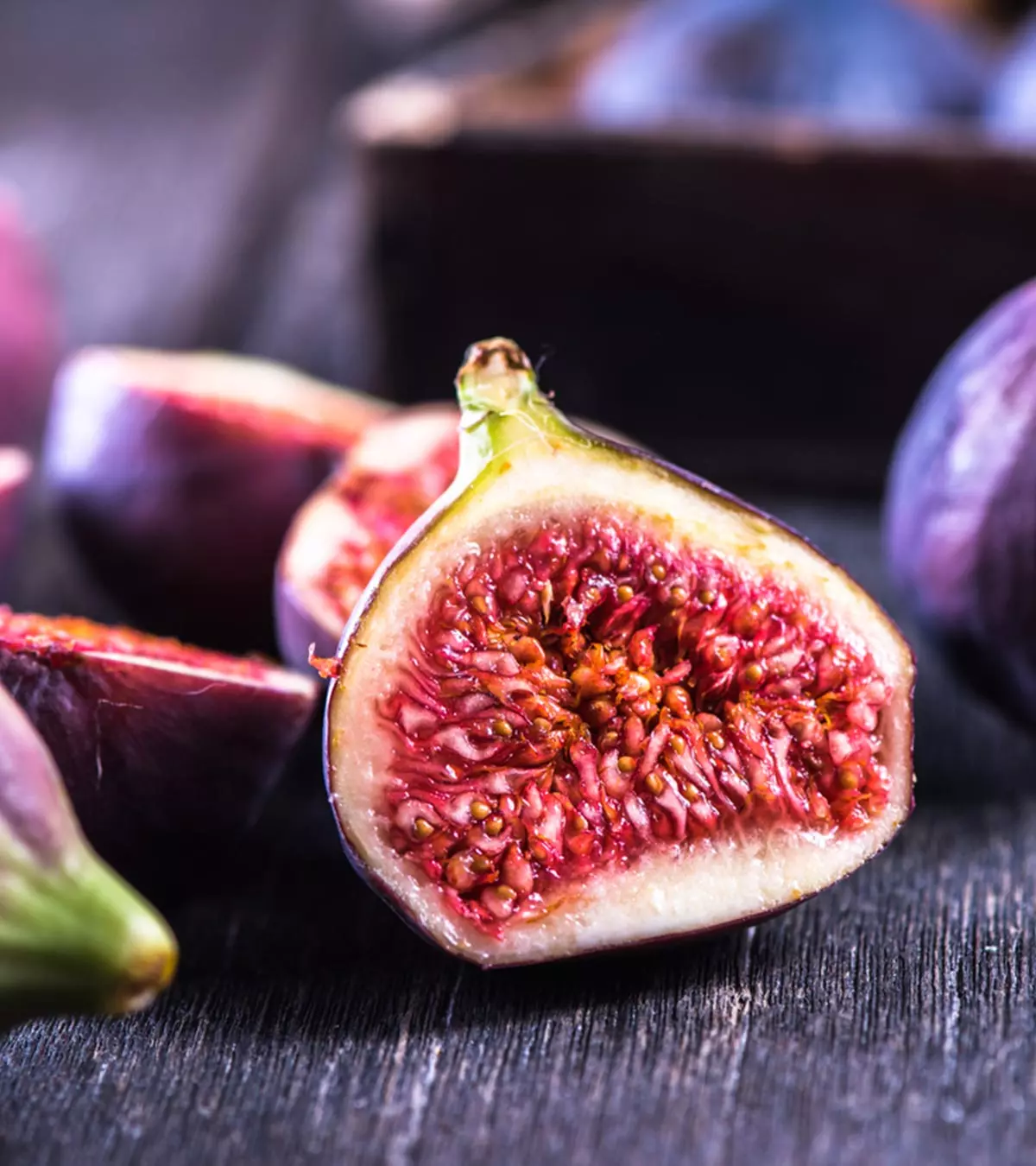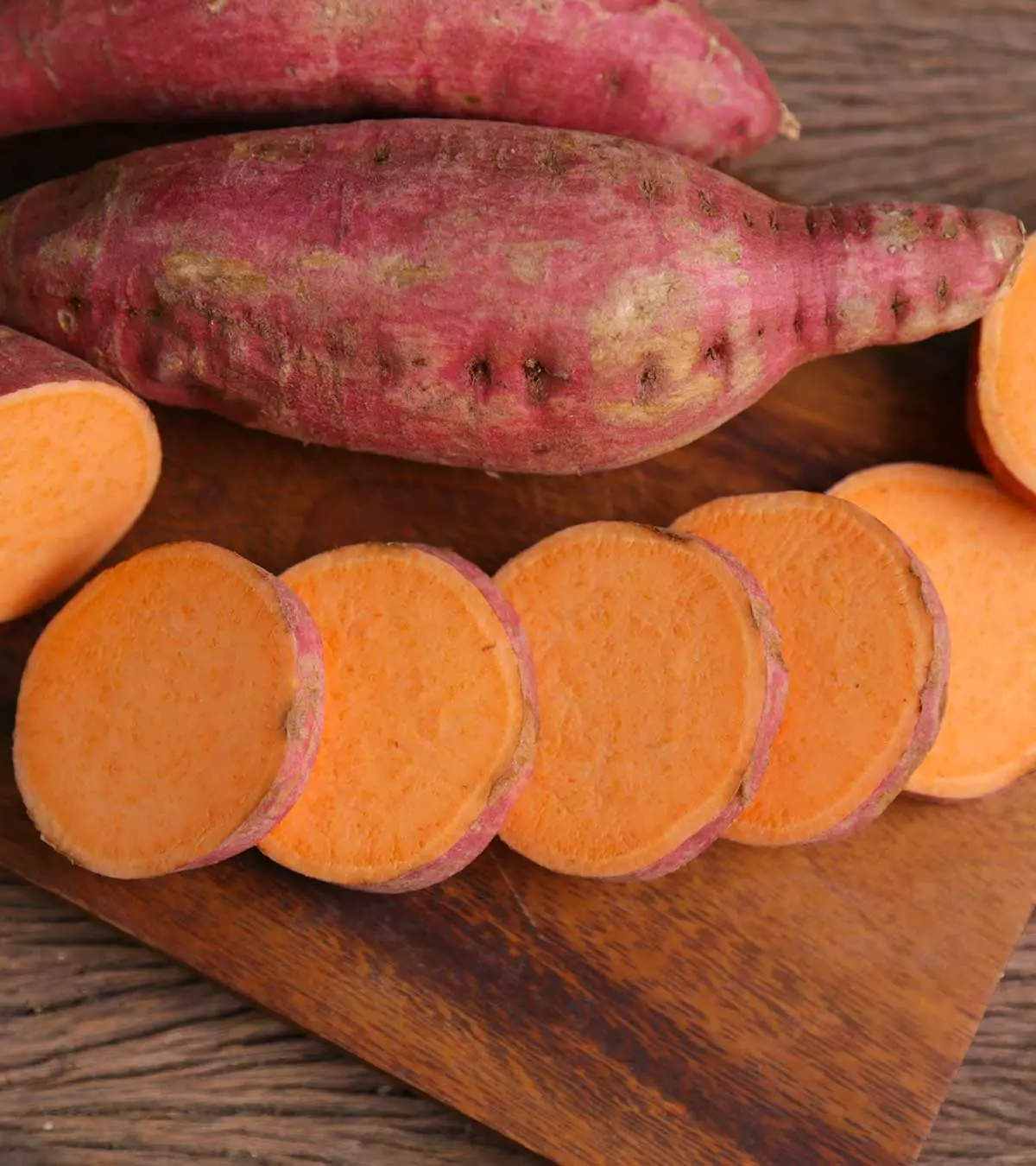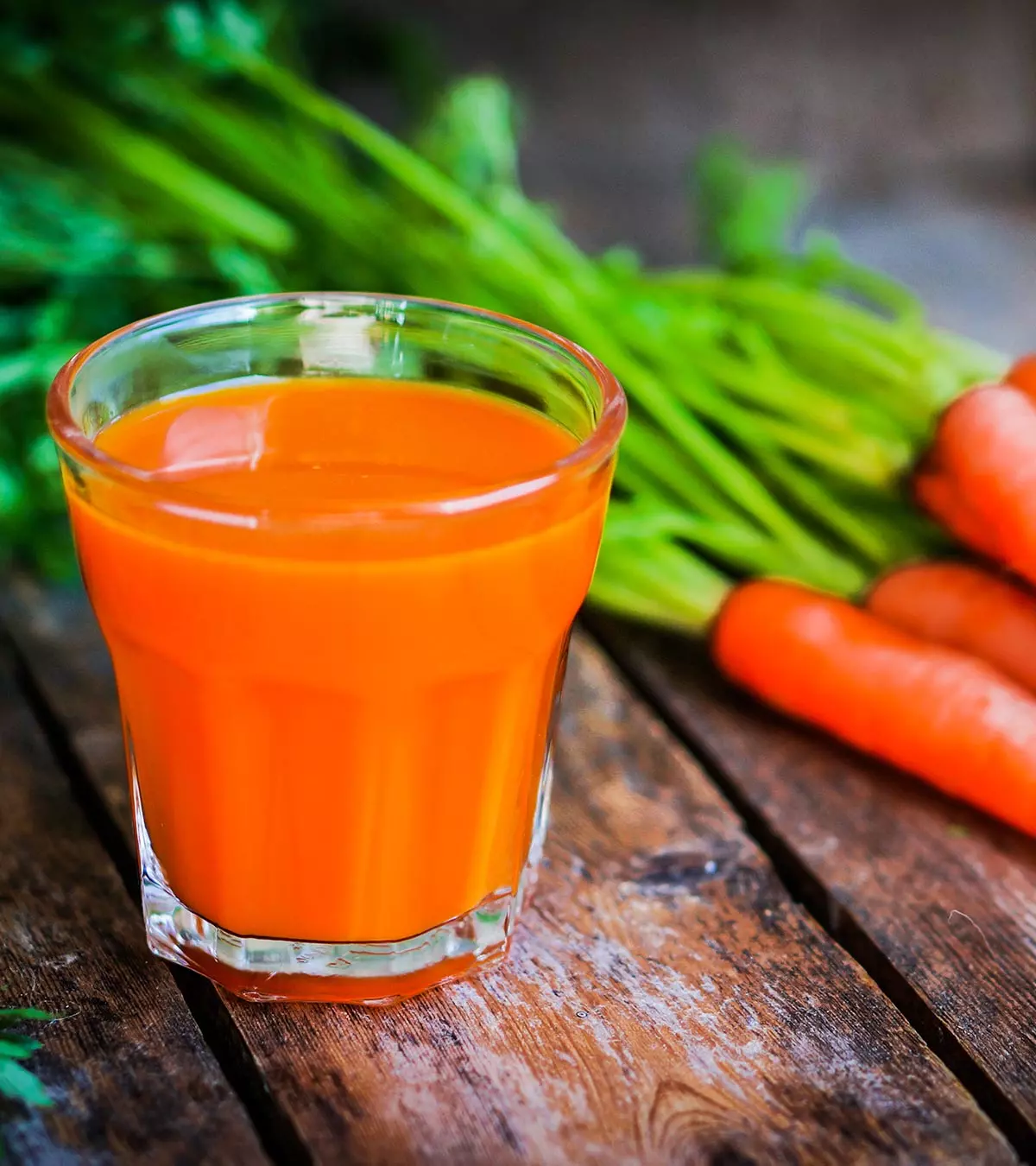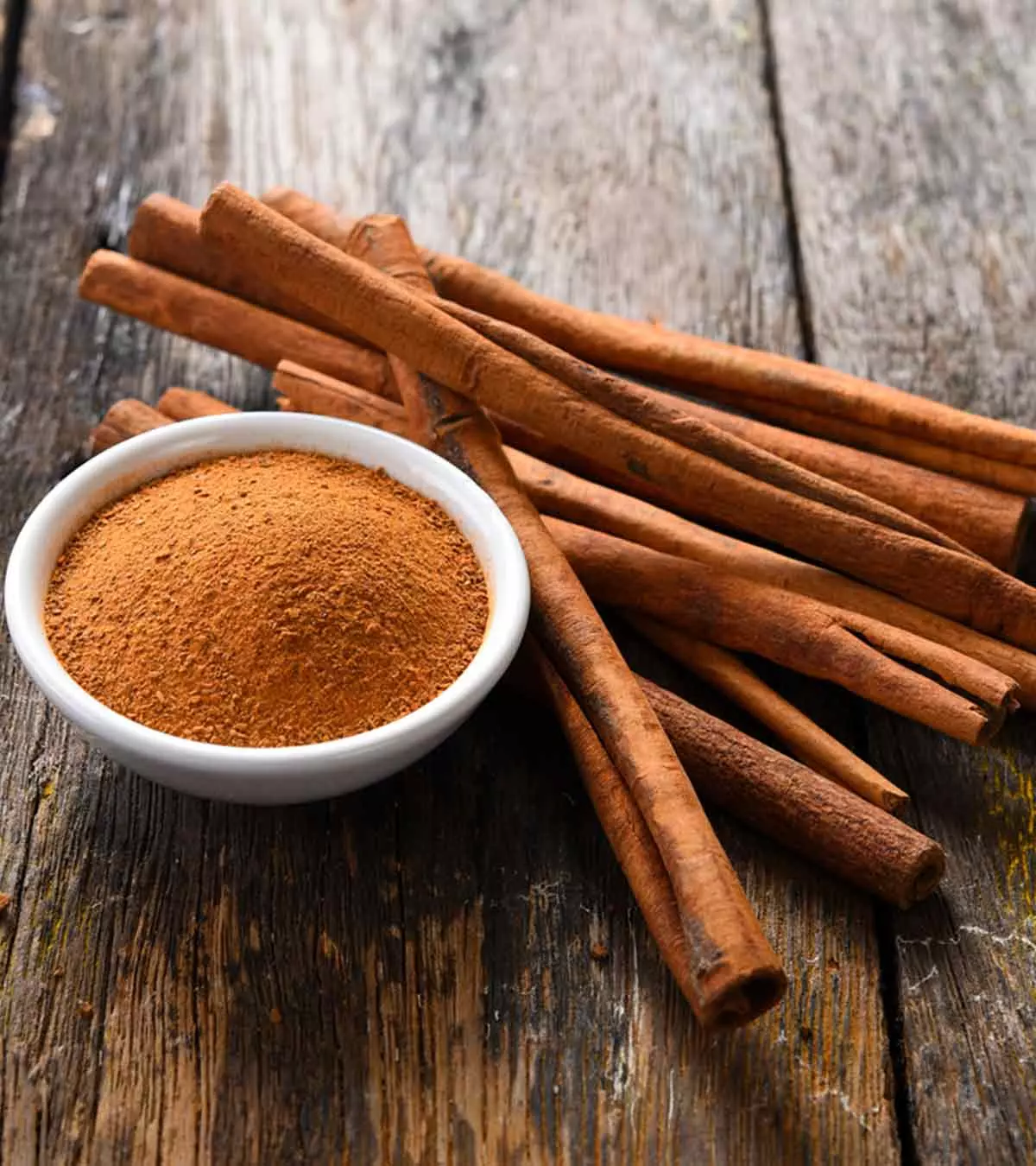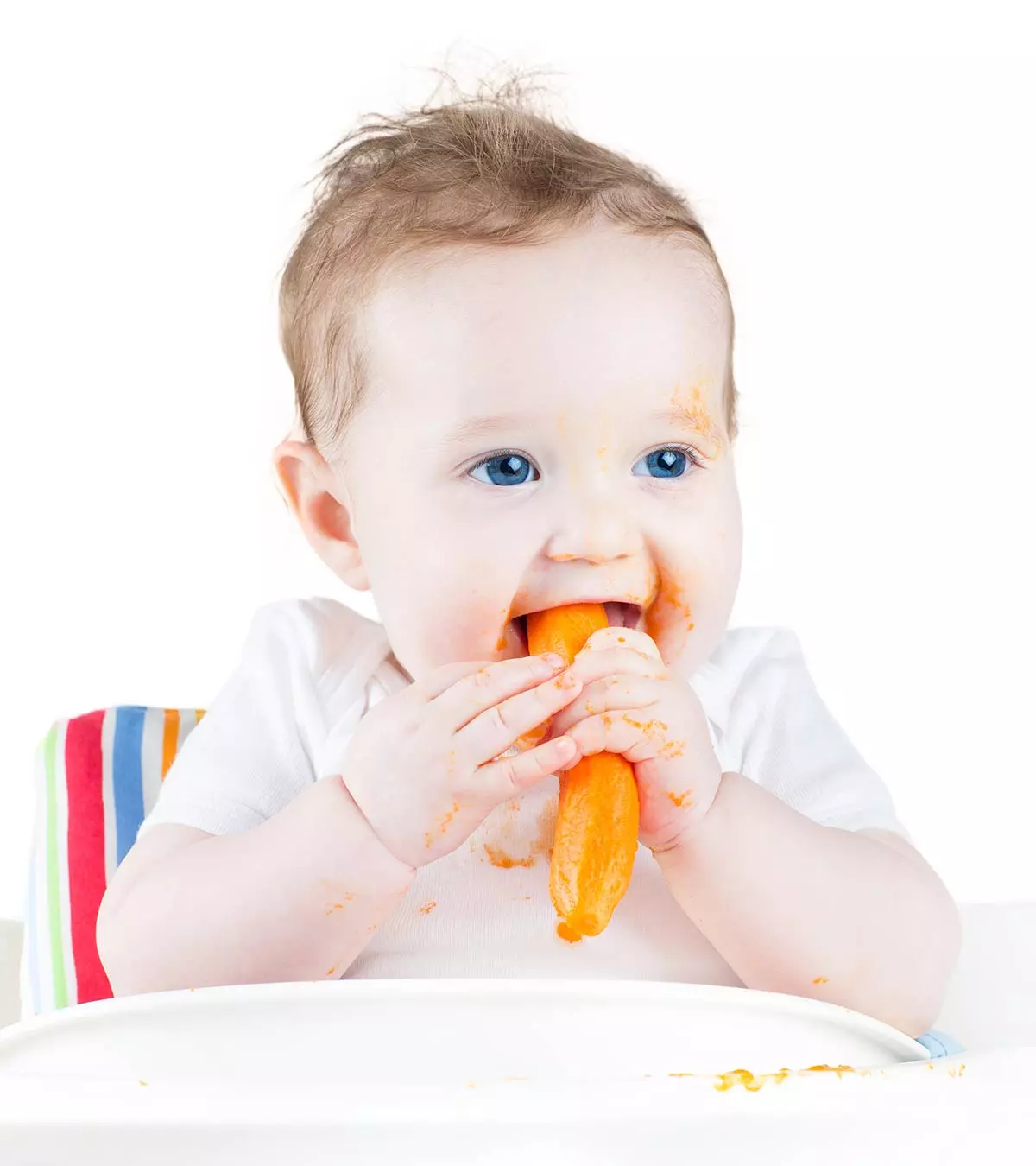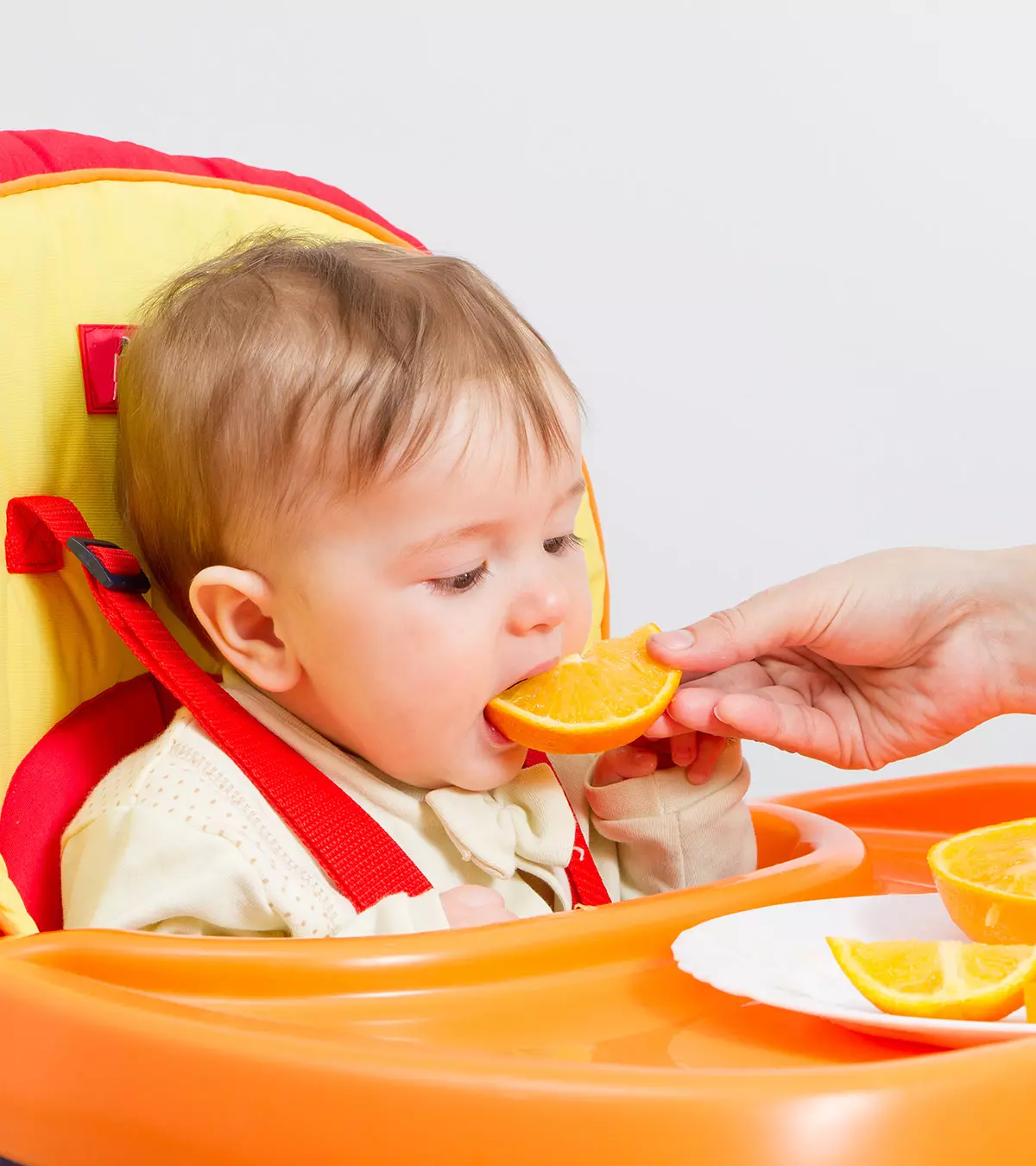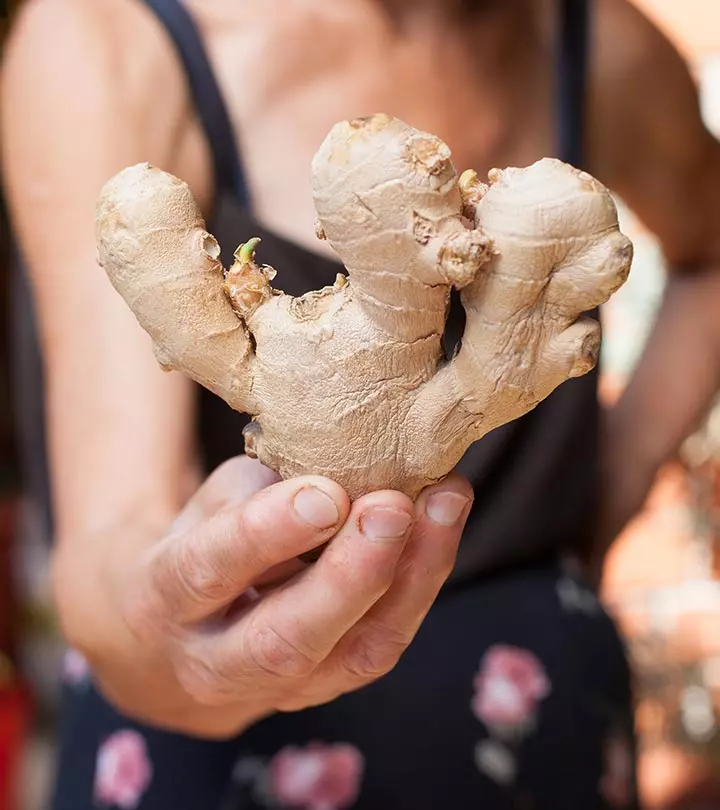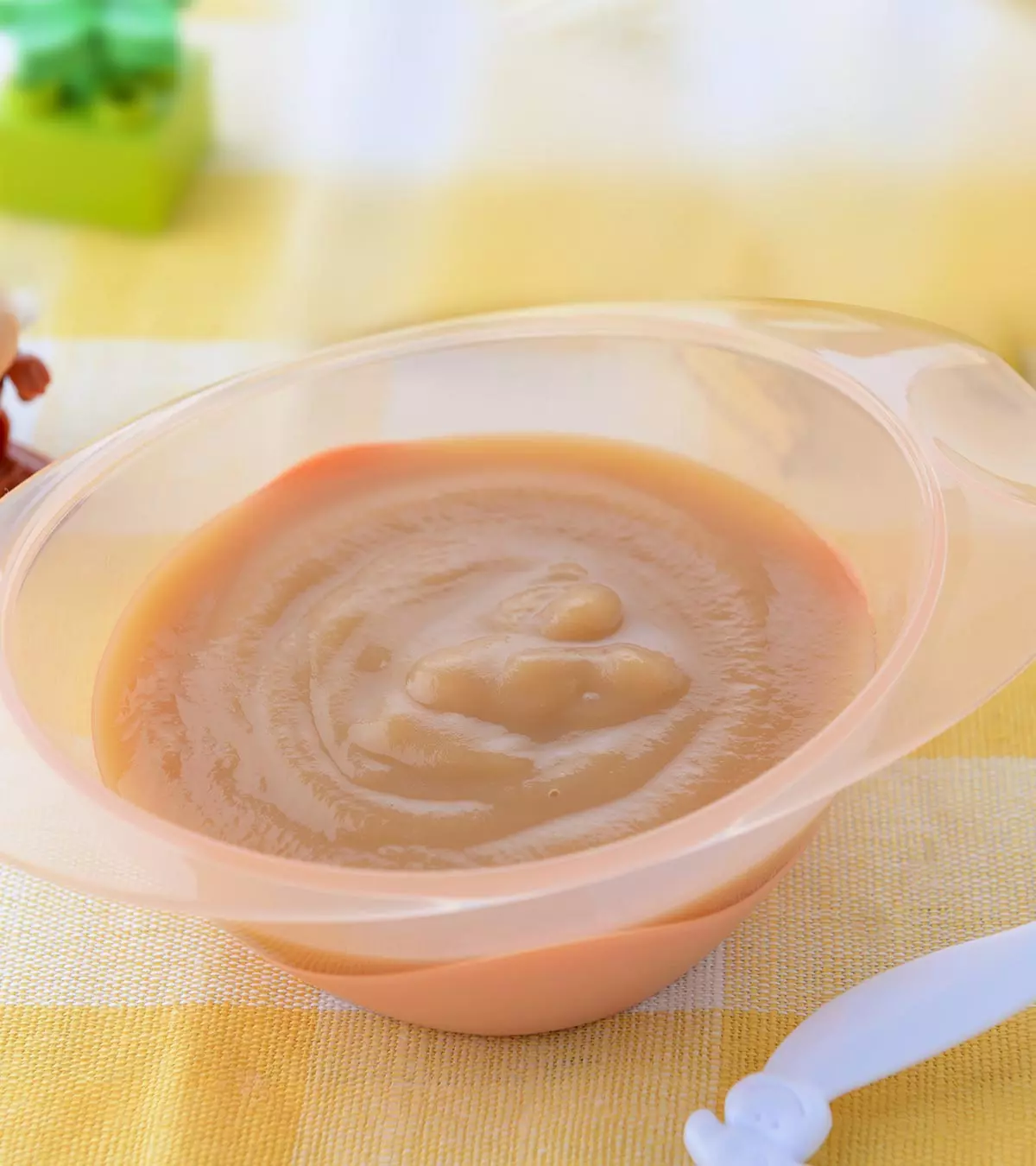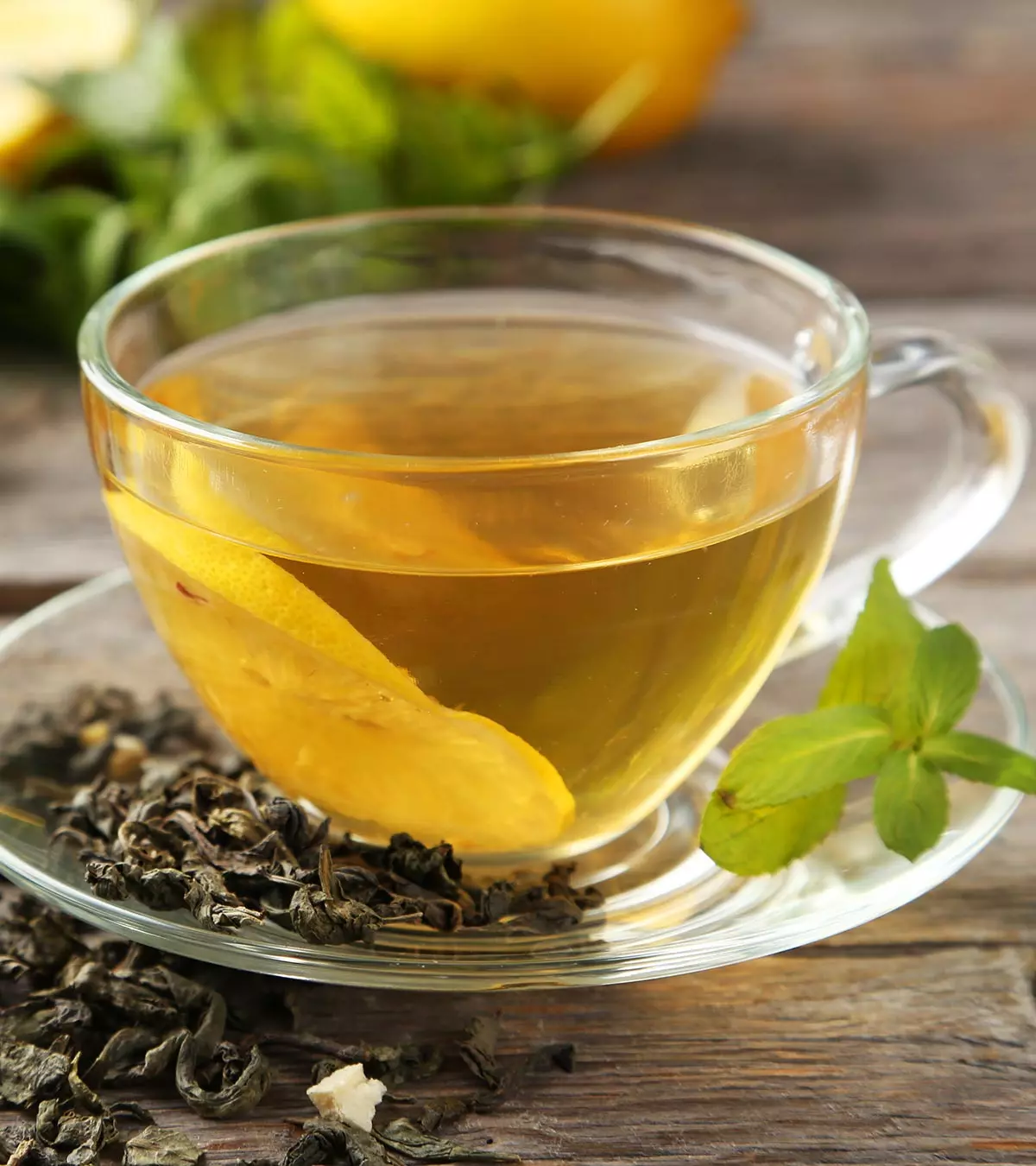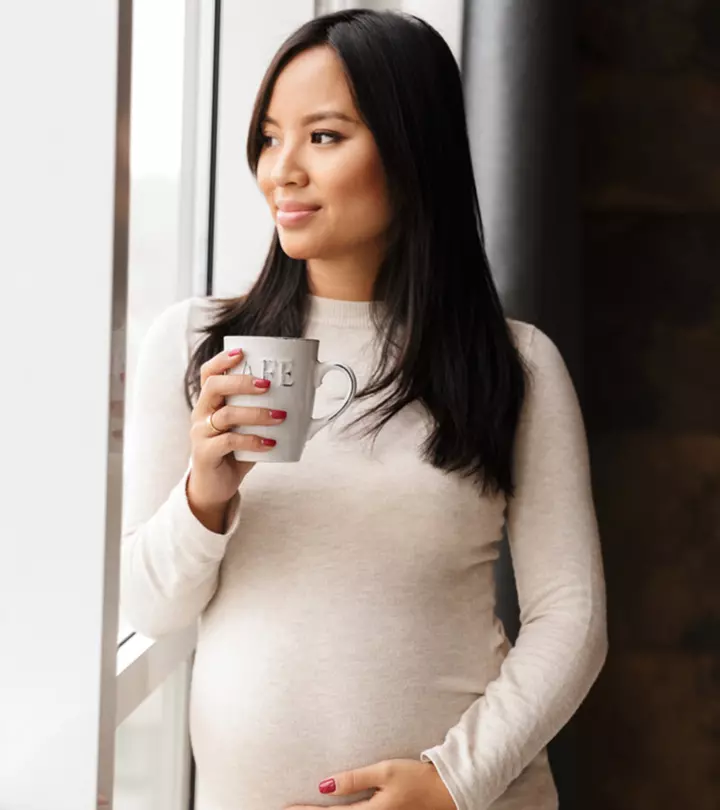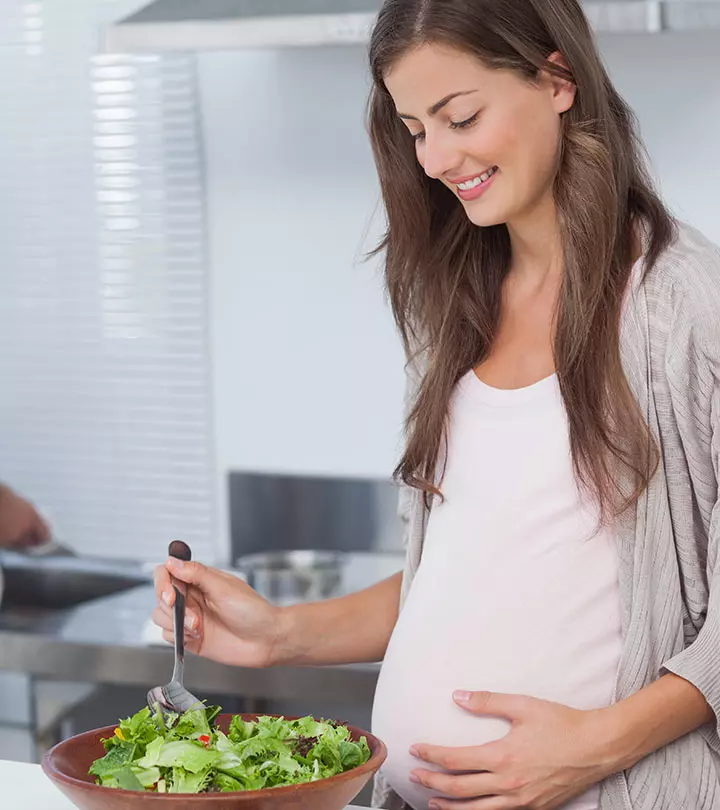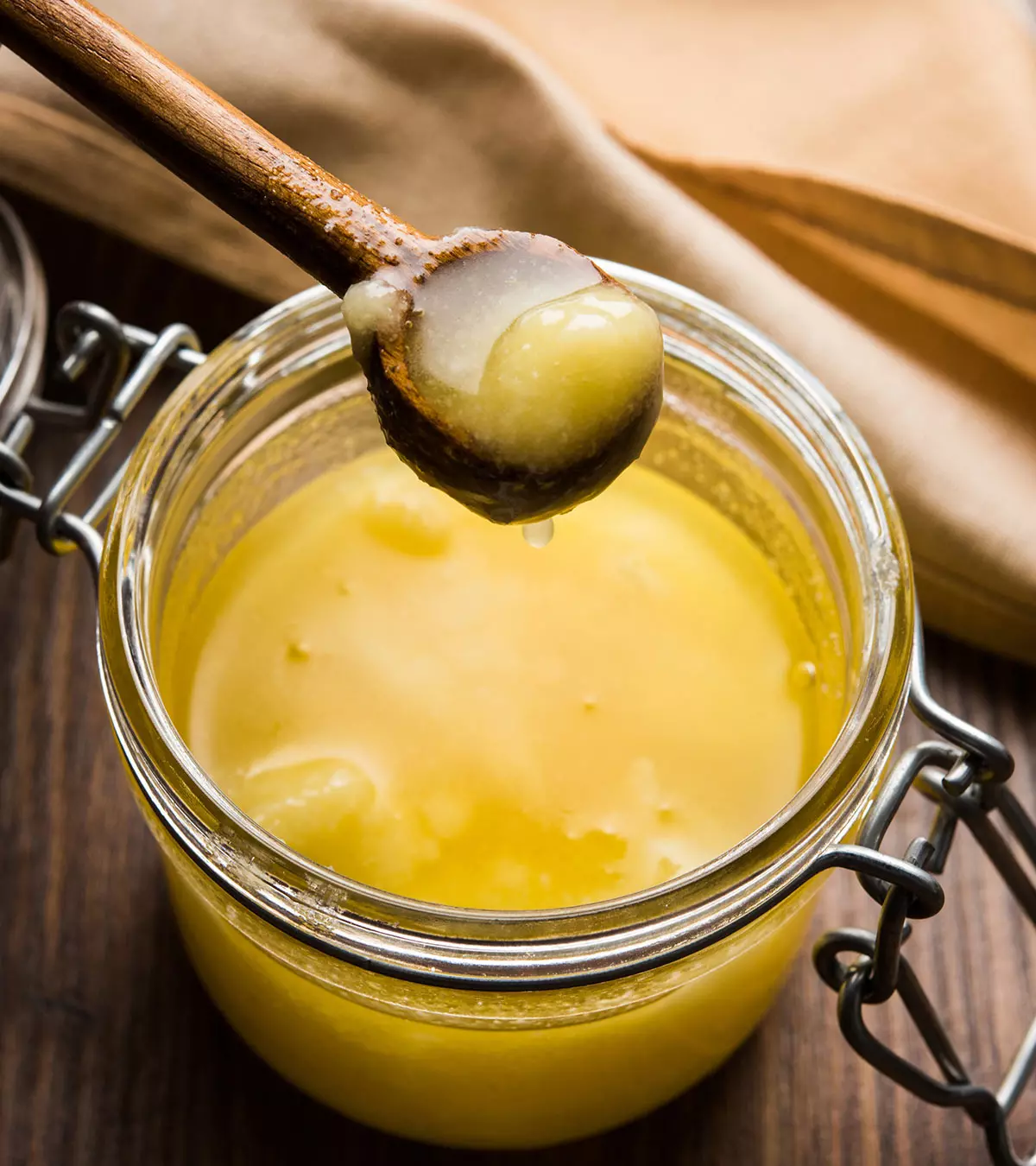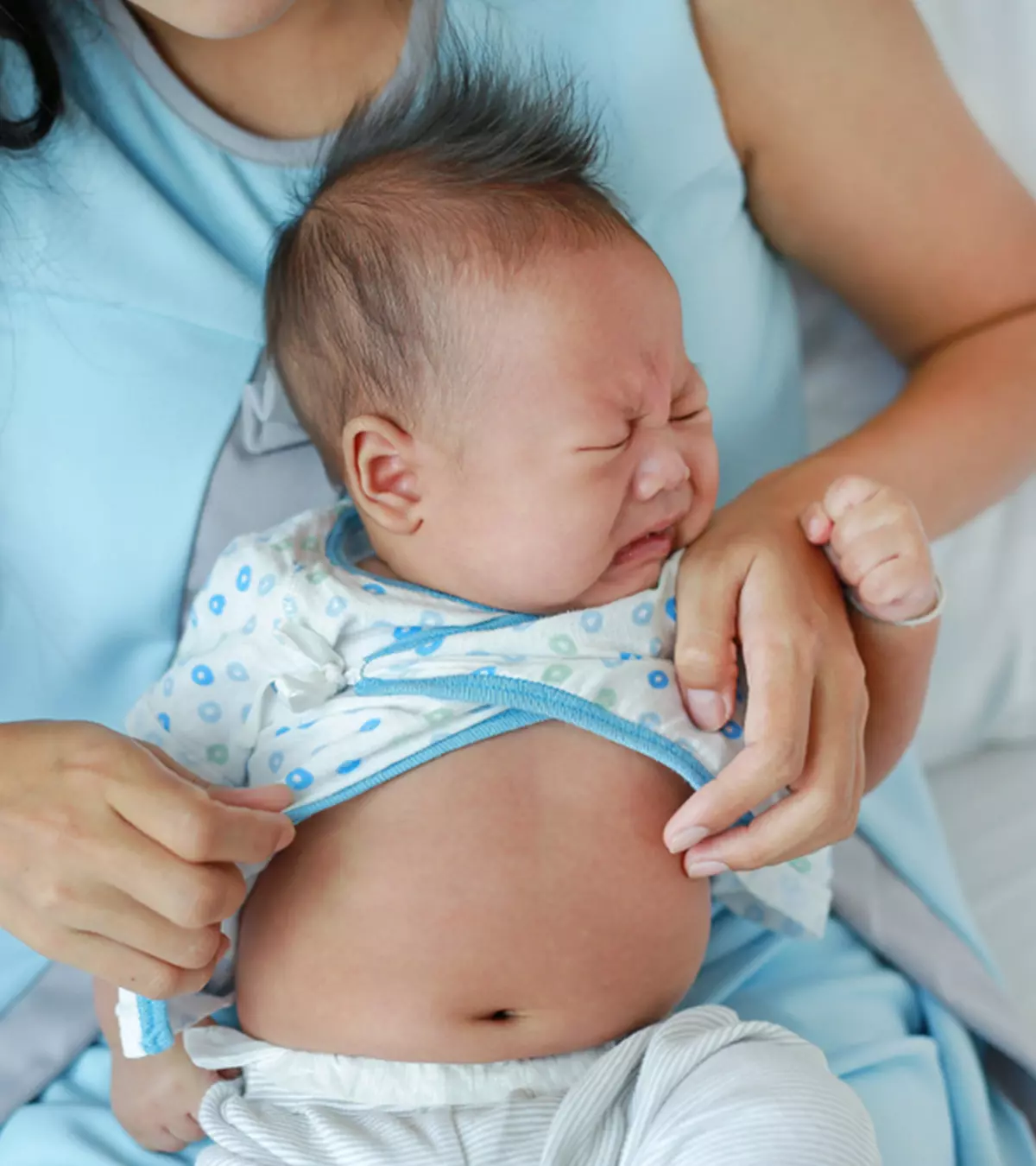
Image: ShutterStock
Food poisoning is a food-borne illness that occurs due to the ingestion of food or drinks contaminated by harmful bacteria, viruses, and other germs

(1). Upon ingestion of spoiled/contaminated food or formula, the pathogens enter the baby’s digestive tract and irritate and inflame it, leading to an infection.
Depending on the pathogen present and the extent of infection, food poisoning in babies can manifest mild to severe symptoms. However, due to their developing immune system, children under five years are more susceptible to severe symptoms and complications (2). Therefore, knowing about food poisoning in detail is imperative for parents.
Read on to know about the specific pathogens that cause food poisoning, the signs and symptoms, diagnosis, treatment, and effective prevention.
Key Pointers
- Food poisoning in babies may result in abdominal pain, upset stomach, vomiting, and fever.
- Some causes include ingesting food contaminated by certain bacteria, viruses, or parasites.
- In some cases, babies may require medication and oral rehydration to treat the condition.
Signs And Symptoms Of Food Poisoning

Food poisoning affects the gastrointestinal system. Here’s a list of some common symptoms that a baby is likely to exhibit when they have food poisoning (3).
- Crying and excessive fussiness
- Abdominal discomfort or stomach cramps
- Upset stomach or diarrhea
- Nausea and vomiting
- Fever
- Dehydration
- Blood in the stool or vomit
- Malaise or overall weakness
In severe food poisoning, a baby or toddler can get dehydrated. Dehydration could cause the following signs in babies and toddlers (4).
- Crying without tears
- Parched mouth
- Sunken fontanelles (soft spot)
- Dry eyes
- Less urination and fewer than six diapers in a day
- Unusual lethargy or unresponsiveness in babies, indicating severe dehydration or illness.
Typically, food poisoning symptoms appear within a few minutes, hours, or days after eating/drinking the contaminated food or drink. The severity of these symptoms can vary from one baby to another and may last from a few hours to several days.
 Point to consider
Point to considerCauses Of Food Poisoning
Food poisoning happens when a baby or toddler consumes improperly handled, unhygienically prepared, or poorly stored foods and beverages. Cross-contamination of foods and drinks anywhere during harvesting/manufacturing, processing, storing, shipping, and preparing is another cause of food poisoning.
Raw or undercooked poultry, meat, eggs, seafood, and unpasteurized milk are common foods associated with food poisoning (5). In addition, baked goods, pre-cut fruits and vegetables, processed/ready-to-eat food, such as meat, and improperly canned or sealed food are other potential sources of food poisoning.
Here’s a brief overview of the microbes that can contaminate foods and drinks, leading to food poisoning (6) (7).
- Bacteria: Most food poisoning cases happen due to bacterial contamination of foods and beverages. Campylobacter, Staphylococcus aureus (Staph), Salmonella, Clostridium perfringens, E.coli, Yersinia, and Shigella commonly cause food poisoning. According to the US Centers for Disease Control and Prevention (CDC), Salmonella is responsible for more foodborne illnesses than other types of bacteria, and children under five are three times more likely to be hospitalized if they get a Salmonella infection.
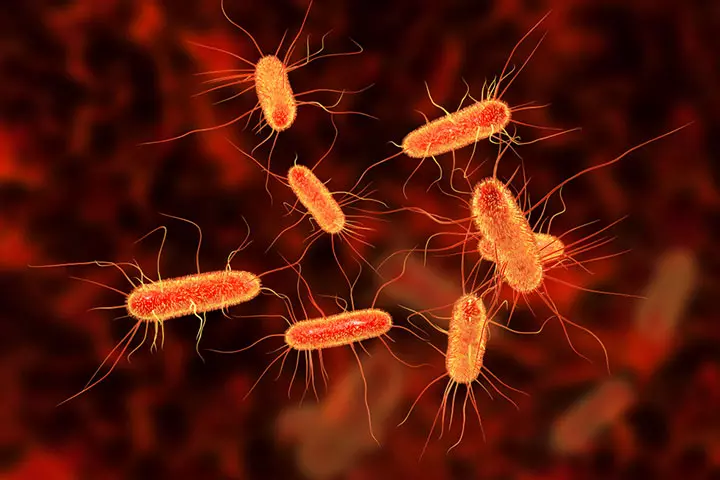
- Viruses: Some common viruses that can contaminate food or drinks are hepatitis A (HAV), rotavirusiAn extremely contagious virus that spreads through feces. , and norovirusiA contagious virus that leads to diarrhea and vomiting. . A virus can transfer to a food item through contaminated water or an infected person handling or preparing the food.
- Parasites: A parasite is a tiny microorganism that can enter the body through food or drink, reside in the digestive tract, and survive for years. Toxoplasma gondiiiA parasite found in contaminated food and water and cat feces. , Giardia, and CryptosporidiumiA parasite found in human and animal feces that spreads through contaminated food and water. are some common parasites that are known to cause food poisoning.
- Toxins and contaminants: Harmful natural toxins and added chemicals in foods and drinks could lead to food poisoning. For instance, certain wild mushrooms contain natural toxins, unwashed fresh produce can contain pesticides, and fish and shellfish may contain toxins produced by algae or bacteria. As a result, consuming these foods can cause food poisoning in babies.
Besides these causes, allergens present in foods and beverages can cause symptoms similar to food poisoning. Heavy metal poisoning is another food and water-borne poisoning that can affect babies.
When To Call A Doctor?
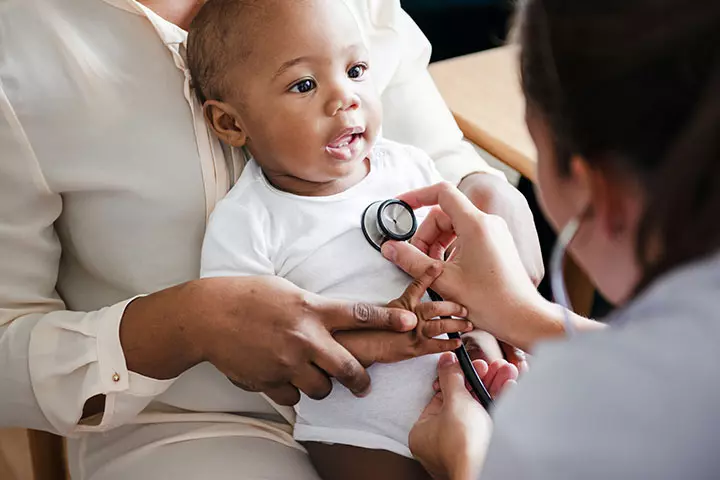
Babies and toddlers have immature digestive systems. Hence, even mild cases of food poisoning may turn severe in a short time. Therefore, take your baby to a doctor immediately if they exhibit food poisoning symptoms or any signs of dehydration, such as dry mouth, lack of tears, or significantly reduced urination. The doctor will examine the child and decide whether the baby or toddler can be treated at home or requires immediate medical assistance.
 Be watchful
Be watchfulHow To Diagnose Food Poisoning?
For babies, especially those with weakened immunity, prompt diagnosis of food poisoning is essential for timely treatment. Delays in diagnosis and treatment may aggravate infection and adversely affect the baby.
Here’s how the diagnosis is likely to happen (8).
- Physical examination: During the physical examination, a doctor will note the baby’s symptoms and examine the abdomen for tenderness or pain. Then, they will inquire about what the baby had, check the baby’s vital parameters, such as blood pressure and pulse, and scroll through the baby’s medical history. Based on the findings, they may order additional tests, such as a stool test, to determine the specific microbe causing the symptoms.
- Blood and stool test: A stool test helps determine the specific microbe causing food poisoning. A blood test is done to detect infection or signs of complications, such as dehydration. It will also help rule out any health problem that may be contributing to the symptoms.
Treatment For Food Poisoning
Most food poisoning cases resolve by themselves within five to ten days (9). However, in some cases, the baby or toddler may require the following treatment.
1. Dietary changes
The doctor may advise you to limit your baby or toddler’s food and beverage intake briefly, say three to four hours (1). It is done to let the digestive system settle. After that, you would be suggested to continue breastfeeding or formula-feeding the baby.
If the baby has started eating solids, the doctor will likely recommend a liquid diet until the symptoms, such as vomiting and diarrhea, subside. Then, as the baby feels better, they can gradually shift to their regular weaning diet, containing foods such as bread, rice, banana, yogurt, lean meat, fruits, and veggies.
2. Oral rehydration

Vomiting and diarrhea in food poisoning can dehydrate the baby or toddler. So, to replenish the lost fluids and electrolytes, the doctor can recommend an ORS for babies, such as Pedialyte or Infalyte.
Additionally, they may suggest giving extra fluids, such as buttermilk and coconut water, to replenish lost fluids, depending on the baby’s age. Severely dehydrated babies and toddlers may need to be hospitalized to get intravenous fluids (IV) under medical observation.
3. Medication
In the cases of severe bacterial infection, the baby or toddler may be administered antibiotics. Since antibiotics kill both good and bad bacteria, probiotics for babies may be recommended to help restore a healthy gut microbiome balance. In addition, if the baby or toddler has a fever or pain, the doctor might suggest appropriate medication, such as acetaminophen or ibuprofen, to control the symptoms.
Remember not to use over-the-counter medications to treat diarrhea, fever, and vomiting in babies and toddlers. Rare but life-threatening complications, such as intussusceptioniA condition in which one part of the intestine slides into the other, causing blockage and leading to vomiting and blood in stools. or HUS (hemolytic uremic syndrome)iA condition usually caused due to E.coli infection, which leads to loss of blood platelets, anemia, or kidney failure. can be avoided by avoiding over-the-counter medications and consulting the doctor soon.
Tips To Prevent Food Poisoning In Babies And Toddlers
Protecting babies and toddlers from microbial infection requires utmost care and vigilance while handling, preparing, and storing baby food. Here’s how you could do that.
For formula-feeding babies

Hygienic preparation of infant formula using clean utensils is the gold standard to ensure the baby’s safety and hygiene. Here are some additional precautions to observe (10) (11).
- Clean and sterilize the baby’s bottle, teats/nipples, and utensils that you use to prepare formula milk. Do the same for cleaning the breast pumps if you feed expressed breast milk to your newborn/toddler.
- Use clean and safe water to prepare baby formula or any other baby foods. Prepare the formula as directed on its package or as instructed by your pediatrician.
- Use a clean, dry spoon to scoop out powder. It is crucial to prevent moisture from entering the formula container, which can initiate bacterial growth and cause spoilage. After preparing the formula, tightly cover the container and store it in a cool, dry place.
- Store expressed breast milk, donor milk, and prepared formula in the refrigerator at or below 40°F (4°C) until ready for use to cease bacterial activity.
- Feed the formula within 24 hours of preparation. Discard the formula that has been sitting at room temperature for more than two hours.
- Discard leftover formula once the baby is done feeding. Bacteria could contaminate half-consumed formula or milk.
For weaning babies and toddlers
Once your baby begins eating solids, you need to observe precautions while handling raw food items and preparing them. The US CDC recommends the following steps to “Clean, Separate, Cook, And Chill” the food to prevent food poisoning (12) (13).
1. Clean
Wash your hands with warm water and soap for at least 20 seconds before and after handling and cooking the food.
Clean the kitchen counter, chopping board, knives, and utensils with hot water and soap. Disinfect surfaces, such as refrigerator and kitchen cabinet handles that you often touch, using a disinfectant.
Wash fresh produce, such as fruits and vegetables, under clean running water as soon as you bring them from the market. Store them at appropriate temperatures away from raw foods, such as meat and fish. Avoid handling food if you have open sores or cuts on your hands and fingers. If you have to, do so after wearing gloves.
2. Separate
Use different knives and chopping boards for animal and plant-based foods. Store raw poultry and meat in re-sealable bags or containers placed in the coldest section of the refrigerator. Store the bags at a designated spot in the refrigerator so that the meat’s fluids and juices do not come in contact with other food items.
3. Cook
Feed well-cooked meat, poultry, egg, and vegetables to babies and toddlers. Use a food thermometer to determine the internal temperature of the cooked food item. Don’t feed ready-to-eat, commercial baby foods to babies directly from the food jar. Instead, take a small portion of the food in a clean bowl using a sterilized spoon. Heat only the portion of the food you have taken out from the jar. Label the food jar with the date when you opened the jar and refrigerate it at 40°F (4°C).
4. Chill
Refrigerate perishable food items within one to two hours of purchase. Store cooked leftovers, such as purees and porridge, in the refrigerator at appropriate temperatures within a couple of hours of cooking. Feed them within a day or two unless you freeze them appropriately for a longer duration. Defrost frozen foods in the refrigerator and not in the sink or on the kitchen counter.
Besides these, you should never feed unpasteurized juices and cider vinegar to babies and toddlers. Read the product label carefully to know whether a product is pasteurized. Packaged baby foods with broken seals or cracked cans are other things you should avoid to prevent food poisoning in babies.
Frequently Asked Questions
1. Can breastfed babies get food poisoning?
Food poisoning is more uncommon in breastfed babies than in formula-fed babies. Moreover, breastfed babies recover sooner from gastroenteritis when compared to formula-fed babies (14).
2. Can a baby get salmonella through breast milk?
Some researchers have seen that salmonella may pass in breast milk for some women and infect the nursing baby. However, it is not observed in all cases. If you have a salmonella infection when breastfeeding, talk to your healthcare provider regarding the safety and precautions to be taken (15).
3. How can I tell if my baby has food poisoning or just a stomach bug?
The major difference between a stomach bug (also known as stomach flu) and food poisoning is the time it takes for the symptoms to appear. The symptoms of stomach flu may take 24 to 48 hours to appear, while the symptoms of food poisoning typically appear two to six hours after eating spoiled food. In addition, stomach flu symptoms last longer than food poisoning (16).
Food poisoning in babies may occur if they consume food or water contaminated with bacteria, toxins, viruses, and other microbes. Raw food, undercooked meat and seafood, improperly canned foods, and unhygienic handling of foods can cause foodborne illnesses. Vomiting, fever, bloating, weakness, and diarrhea in babies are common signs of food poisoning. You may also notice blood in the stools, fussiness, and excessive crying in some babies. Look for signs of dehydration and seek medical care if the symptoms worsen or are not improving. Blood tests and stool tests are needed to identify the causative organisms and provide treatment accordingly.
Infographic: Prevention Of Food Poisoning In Babies And Toddlers
Food poisoning is rare in breastfeeding babies. However, raw and contaminated ingredients can trigger food poisoning in formula-fed babies and those on solid foods. Check out the infographic below for essential tips to remember to prevent food poisoning in babies and toddlers.
Some thing wrong with infographic shortcode. please verify shortcode syntaxIllustration: Food Poisoning In Babies: Symptoms Diagnosis And Treatment

Image: Stable Diffusion/MomJunction Design Team
Knowing how to identify the major signs of severe food poisoning may be helpful for you to decipher if your baby is suffering from an episode. Learn the five major signs with this video.
References
1. Food Poisoning and Food Contamination; AAP
2. People at Increased Risk for Food Poisoning.
3. A to Z: Food Poisoning; Johns Hopkins Medicine
4. Signs of Dehydration in Infants & Children; AAP
5. Foods That Can Cause Food Poisoning; CDC
6. Food Poisoning; Food Safety
7. Symptoms & Causes of Food Poisoning; NIH
8. Diagnosis of Food Poisoning; NIH
9. Food Poisoning; Nationwide Children’s Hospital
10. Keeping Babies & Toddlers Safe from Foodborne Illness; Partnership for Food Safety Education
11. Infant Formula Preparation and Storage; CDC
12. About Four Steps to Food Safety; CDC
13. Food poisoning; NHS Inform
14. Breastfeeding and gastroenteritis; Australian Breastfeeding Association
15. Salmonella; The Organization of Teratology Information Specialists
16. Stomach Flu or Food Poisoning? How To Tell; Cleveland Clinic
Community Experiences
Join the conversation and become a part of our nurturing community! Share your stories, experiences, and insights to connect with fellow parents.
Read full bio of Dr. Anjan Bhattacharya
Read full bio of Swati Patwal
Read full bio of Rohit Garoo
Read full bio of Ghazia Shah





